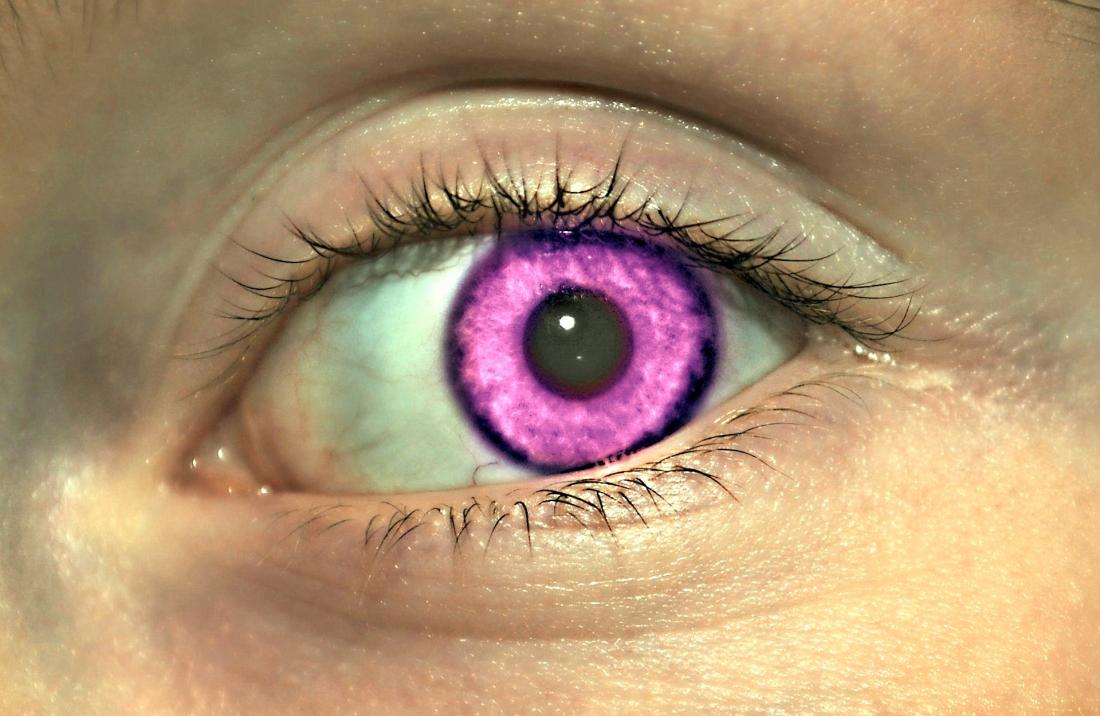The origin of Alexandria is an online myth. He argues that gene mutations turn some people into “perfect” people. It’s fiction, but some real medical conditions can cause eye color changes.
The myth dates back to 2005, but may have spread earlier. People in a false state are said to live to the age of 150, and they probably have:
Purple eyes, colors that are present or developed shortly after birth
Thin skin
Perfect proportion of body
Lack of hair
High levels of childbirth, but women do not have menstruation
Excellent immune system
There is almost no body waste
Although the origin of Alexandria is complete production, the following actual conditions may change the color of the iris. Conditions for changing eye color
The iris is the coloring that surrounds the pupil of the eye. Controls the amount of light that enters your eyes.
Natural changes with age
Most babies are born with brown eyes. However, many people of Caucasian offspring initially have blue or gray eyes. This color darkens over time and becomes green, hazelnut, or brown. Babies with brown eyes experience little change in iris color, but the brown color can become more noticeable.
The change in color of the iris is caused by a protein called melanin, which is also found in hair and skin. Cells called melanocytes produce melanin in response to exposure to light.
Melanocytes become more active in the first year of life and explain the changes in baby’s eye color.
Eye color changes usually stop by the age of six, but some experience it in adolescence and adulthood. ResearchTrusted Source shows that this phenomenon affects 10 to 15 percent of Caucasians.
Heterochromia
People with heterochromia have different colored eyes. Another form of the condition, called partial heterochromia, causes a color change within the same iris.
In most cases, heterochromia occurs sporadically and is not caused by another disorder.
In rare cases, it may be related to other conditions such as:
Horner’s syndrome
Parry Romberg Syndrome
Sturge-Weber Syndrome
Waardenburg Syndrome
Fuchs Iris Ciliary Flame (FHU)
This rare disease, also known as fuchs holly-chromic inflammation, is characterized by long-term inflammation of the iris and other parts of the eye.
FHU causes a change in eye color. The iris is usually brighter, but in some cases it can be darker. According to the American Uveitis Association, FHU usually affects one eye, but 15% of people experience changes in both.
Other symptoms include poor vision and the perception of “floater.” FHU may increase the risk of developing other eye conditions such as cataracts and glaucoma.
Horner’s syndrome
Horner’s Syndrome, or Horner-Bernard Syndrome, refers to a group of symptoms that affect one side of the face. These include:
Pupil size reduced
DelayPupil ed pupil opening in dark places
Hanging eyelids
Reduced sweating on one side of the face
Different eye colors may appear due to differences in pupil size between affected and unaffected eyes.
When the syndrome develops in infants under the age of one, the iris of the affected eye may also fade. Horner’s syndrome is caused by the destruction of nerve pathways that connect the brain to one eye and one side of the face. This is often the result of damage from the following causes:
Spinal cord injury
hit
produce
The root cause may not be found.
Pigmented glaucoma
Glaucoma is a group of eye conditions caused by damage to the optic nerve. This damage is often associated with abnormally high pressure in the eye. Glaucoma can cause vision loss if left untreated.
Not everyone knows, but it is estimated that more than 3 million Americans have glaucoma.
One type, pigmented glaucoma, strips the pigmentation of the iris into smaller particles. These granules collect in the drainage channels of the eye and prevent liquids from leaking and increasing eye pressure.
Eye color does not change completely, but this can lead to iris abnormalities. Treatments, including medication, laser, or surgery, can reduce the buildup of pressure, but it is difficult to prevent the release of pigment.
Iris tumor
Tumors can grow behind or inside the iris. Most are pigmented mole-like lesions called cysts or nevus. Other tumors can be cancerous.
Tumors of the iris usually do not cause symptoms, but people with nevus may notice changes in eye color.
You should consult your doctor if you have no other symptoms, especially if you have a nevus.
Change shape and color
growing
Interfere with students
Treatment includes radiation therapy and surgery.
Medical eye drops
Some eye drops used to treat glaucoma can cause eye color changes.
Drugs known as prostaglandin analogs, such as latanoprost (Xalatan) and bimatoprost (Lumigan), can darken bright-colored eyes. They can also cause other changes in the appearance of the eyes.
Bimatoprost acts as an eyelash enhancer and is sold under the name Latisse for this purpose. When applied to the eyelashes, the lattice can stimulate growth, but it can also increase the brown pigmentation of the eyes. This effect can be permanent.
The grid can also darken the skin on the eyelids, but this effect usually disappears when a person stops using the product. When to see a doctor
Talk to your doctor if you see a change in the color of one or both eyes. Changes that are not related to color may also indicate an underlying condition and should be investigated.
A person should also seek treatment when he / she experiences:
Vision loss
Ambiguity
Floating spot in the field of view
pain
Red eye



